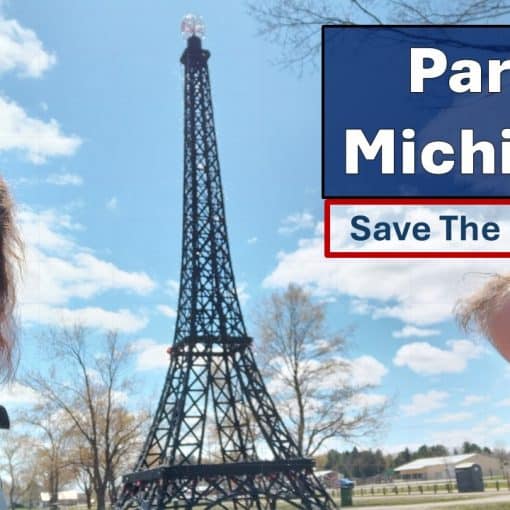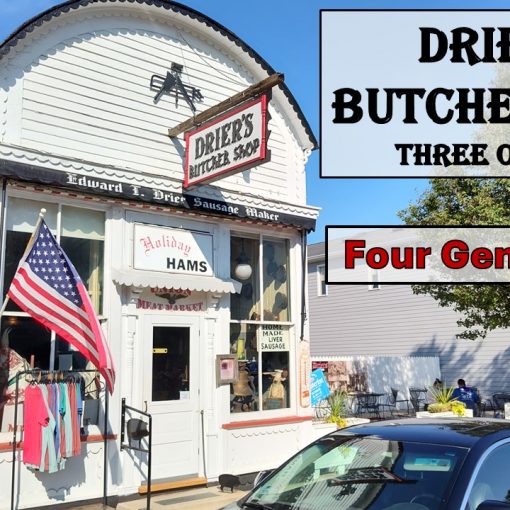Did you know there’s a multi-use recreation trail from Kalamazoo to South Haven? Through the effort of many and the resistance of some, this retired rail line had been reimagined into the linear park it is today. This rail line is FULL of crazy, curious history! Join us as we investigate these long-abandoned, but once well-known, product-making towns along the way: brick building, mint making, striking oil, pickle production and the famous boxer, Joe Louis, training camp. All of this right here in western Michigan!
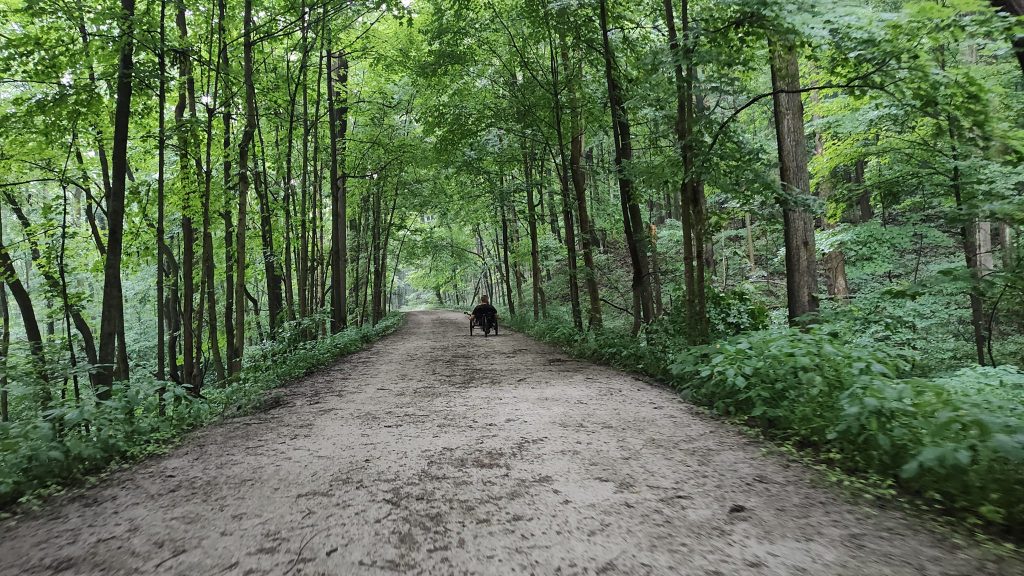
Trailheads with water, restrooms and tire pumps dot the route every few miles.
Brief Railroad History
The Kalamazoo-South Haven rail line had been constructed in 1869. Settlements had sprouted up along the tracks like mushrooms in the forest. With the railroad making deliveries, mills could more easily transport their lumber which had increased profits. Farmers had been able to ship their ripe produce more quickly so many had purchased additional land for more farming acreage. The economy had grown as the trains moved goods and people for an entire century from 1870 to 1970.

Map Credit: Michigan’s Department of Natural Resources
Building The Kal-Haven Trial – A Dedicated Struggle
With the Kalamazoo – South Haven railroad being abandoned in the early ’70’s, a group of citizens had a vision and approached the Michigan Department of Natural Resources (DNR) in 1973. They had wanted to create a multi-use, linear park along the railroad route. The DNR had supported this trail proposal, however the lack of funding had stalled the project.
At that time only one other “rail to trail” park had been in the process of being built. The Haywire Grade Trail had been located in the upper peninsula. So this linear trail project had been an unfamiliar concept to those in the lower peninsula and had been met with resistance. The public had worried about vandalism and theft along the path.
A decade later “The Friends of the Kal-Haven Trail” had designated itself as a non-profit in 1983. They had worked on researching the settlements along the trails. The plan had been to place historic signs at these sites commemorating the lives of those who’d lived along the tracks. Simultaneously, the Friends group had held meetings hoping to convince the residents of the trail’s benefits.
In 1987 the DNR had created a master plan and purchased the land for $428,750. The residents along the path had brought their concerns to the court. An injunction had delayed the opening of the trail until August of 1989. The Kal-Haven Trail had been the second linear park opened in Michigan.
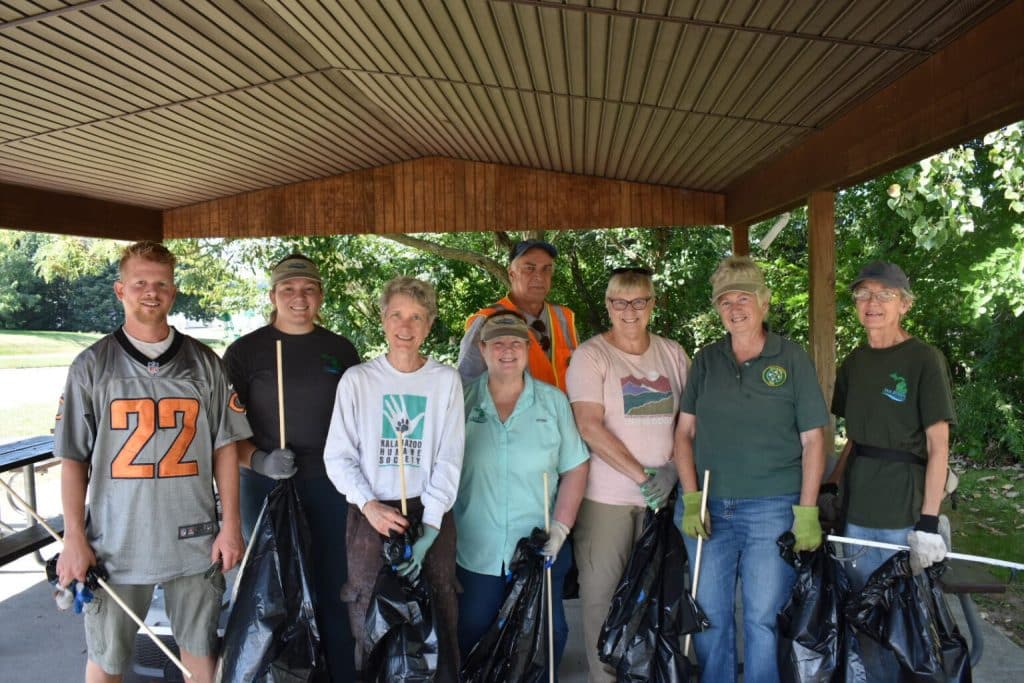
The trail upkeep has recently included replacing the covered bridge near South Haven.
Photo Credit: Kalhaven.org 2022 Clean-up Crew
These two rail trails have “blazed the trail,” if you will, for other multi-use paths around our state. Currently there are 134 rail to trail treks all around Michigan!
Our Ride Through Some Crazy Cool History
Knowing the struggle that this project had taken completely added to our appreciation of “The Friends of the Kal-Haven Trail” and the “Michigan DNR.” Every few miles there had been convenient restrooms, tire pumps and picnic areas. Paper maps and QR codes are available, too! I had been looking forward to learning about the villages which had once been plotted along the rail line. The volunteers have made this ride an inviting experience.
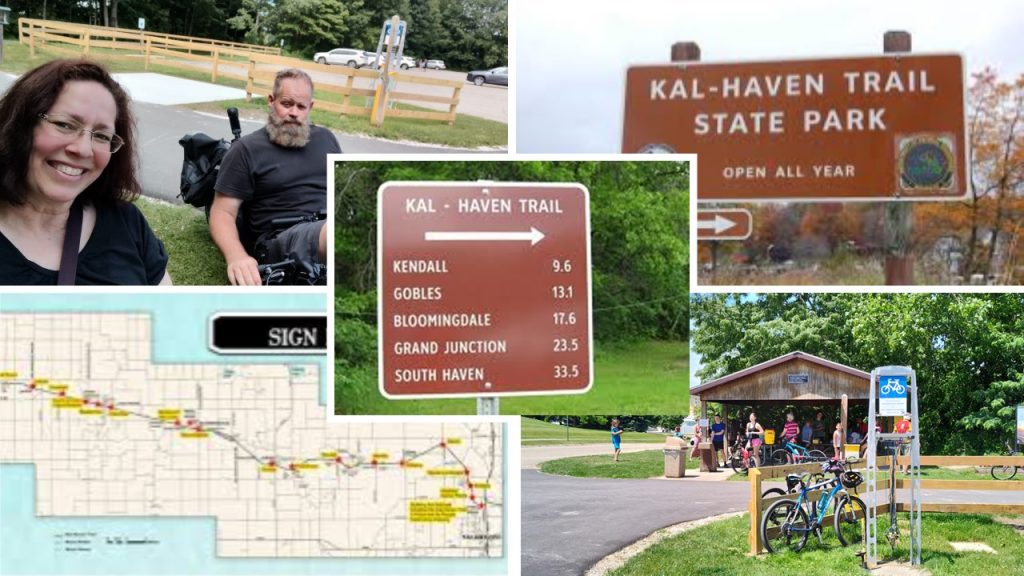
Chuck appreciates being able to carry a lot of gear in the satchels.
I am thankful for cruising easily following several orthopedic surgeries and injections.
We had headed down the crushed limestone trek in search of the 31 explanatory history panels placed along the route. Each one had been carefully placed where the towns had once bustled with life. Each settlement holds their stories, but I will highlight a few here. I encourage you to traverse any section of the path. There’s convenient parking at the six main tailheads along with off road parking at other locations.
Williams – Potawatomi and Building Bricks
The Potawatomi had inhabited this area. Chester Williams had began farming here in 1854. His great-grandson, Dick Rice, had been interviewed later in his life. Rice had reported, “They (Potawatomi) used to come in May from a winter home, pitched tents near the creek and made gardens of vegetables…They treated me well and two boys, my age, would come and play in the yard after their chores were done. They stayed until the gardens finished producing – leaving in September for warmer weather.”
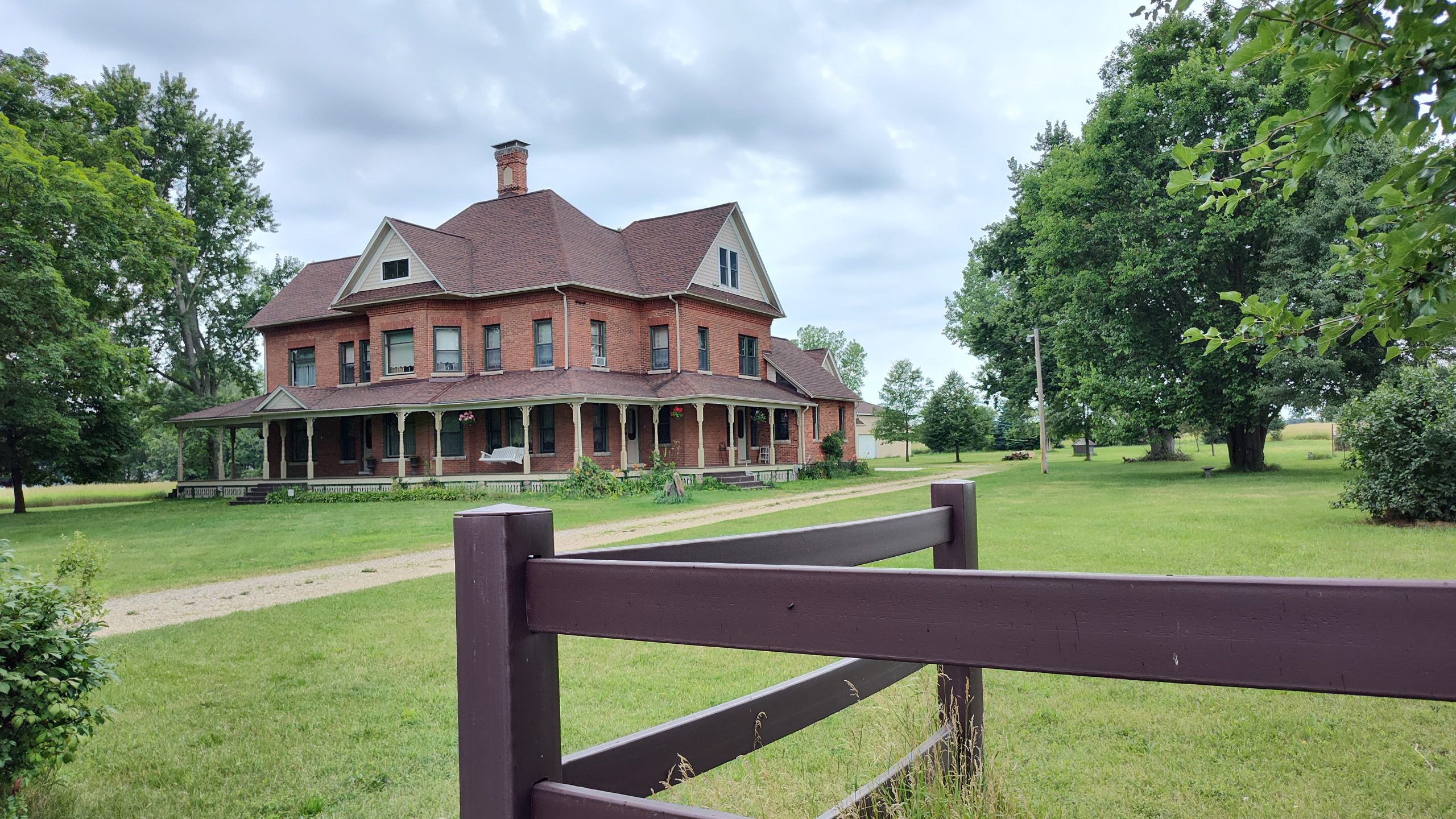
By 1895 the town of Williams had a population of 100 people. Most had worked at either “Williams Hoop and Heading Company” or “Shields’ Brickyard.” Patrick Shields had used his own company’s bricks to construct a 4,400 square foot home for himself, his wife and their ten children. His brickyard had made the bricks used in the construction of many buildings in Grand Rapids and the State Hospital in Kalamazoo.
Mentha – Mint Production
Would you believe that Mentha had once produced most of our nation’s mint? It had all started in 1901 when Albert M. Todd had purchased 2,000 acres of marshland. His handful of workers had dug fifteen miles of canals in order to make the fields ready for his special variety of mint plants, English Black Mitchum Peppermint. At that time there had been a growing desire for peppermint oil which had been used in producing toothpaste and gum.
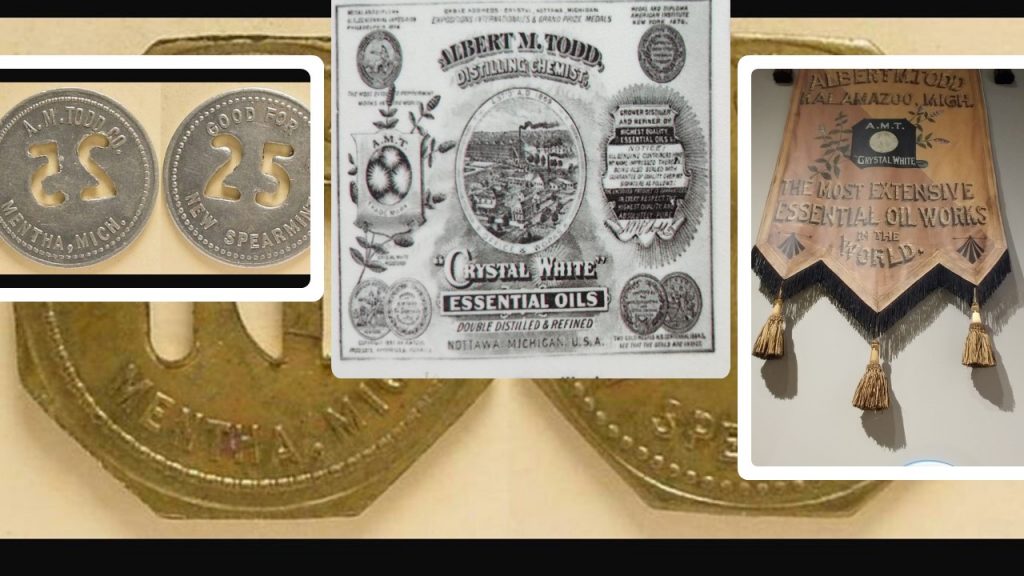
Photo Credit: Kal-Haven Heritage Trail
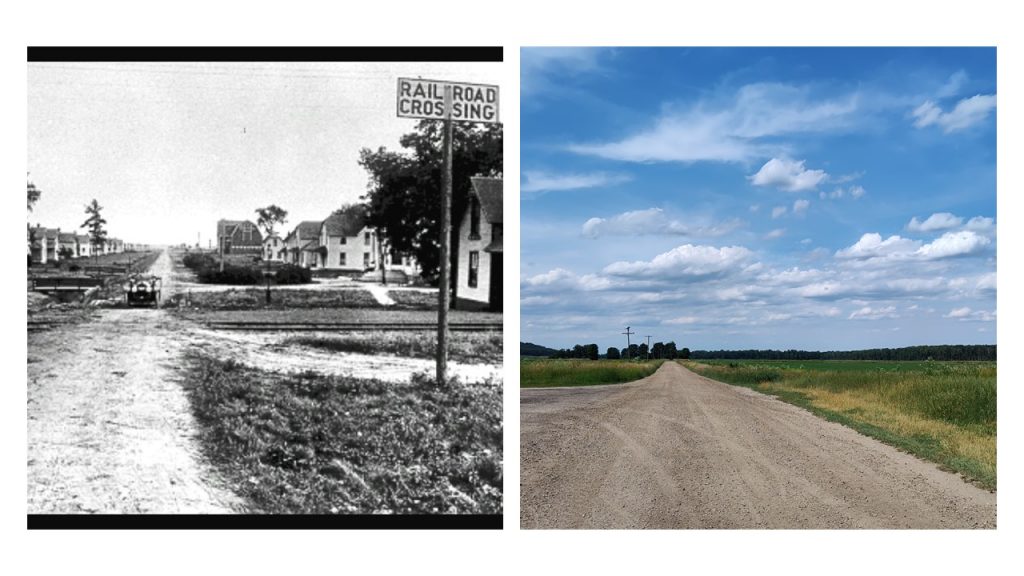
Photo Credit (left): Kal-Haven Heritage Trail
By 1920 Mentha’s peppermint production had populated this town with enough workers and families to produce 98% of our nation’s peppermint supply. Albert M. Todd had earned the title, “The Peppermint King.”
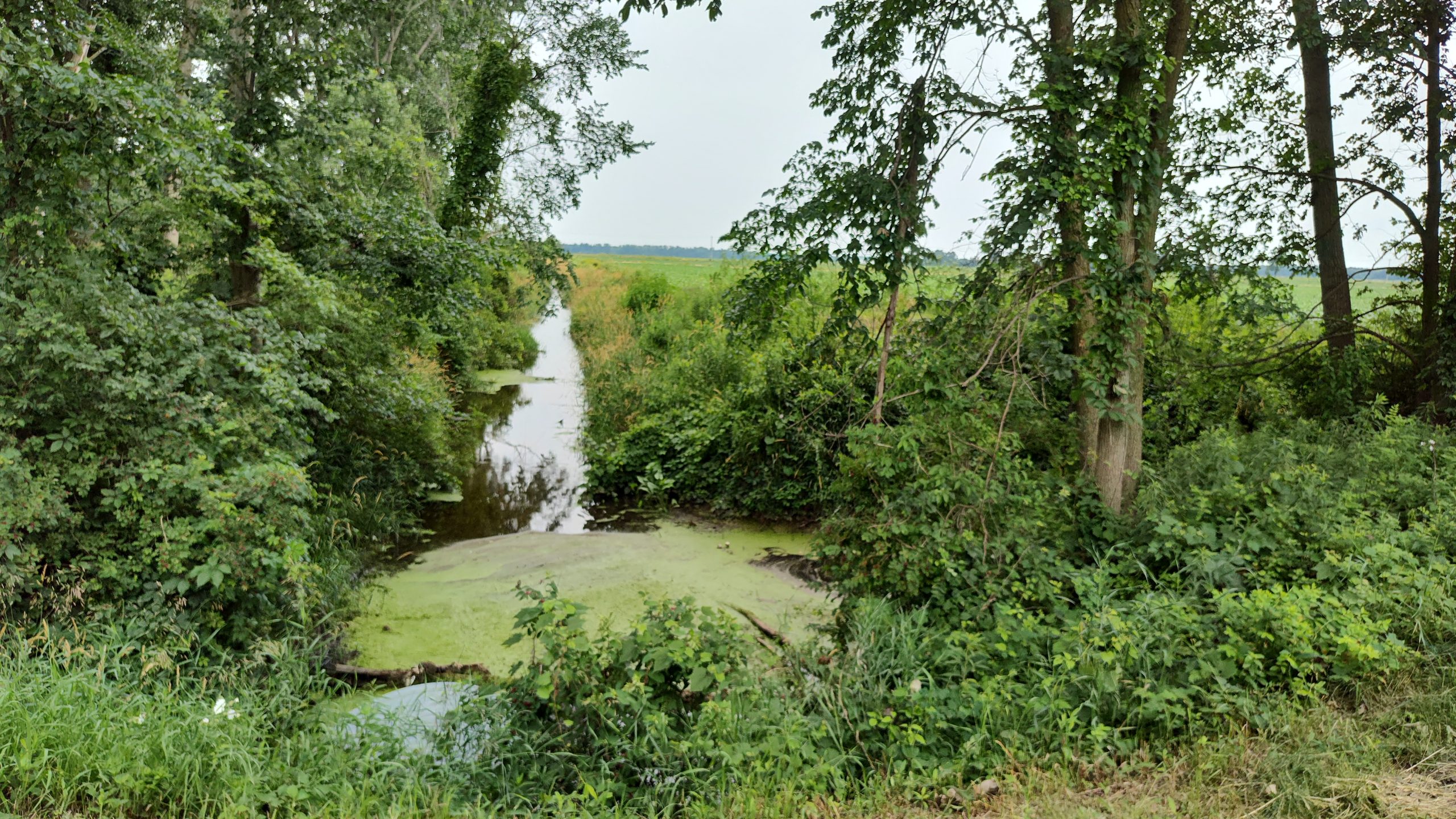
Bloomingdale
In 1870 as the Kalamazoo-South Haven rail line had been built through Bloomingdale, community member, Augustus Haven, had donated his land surrounding the train station. This area had become the central hub of the town and still is today.
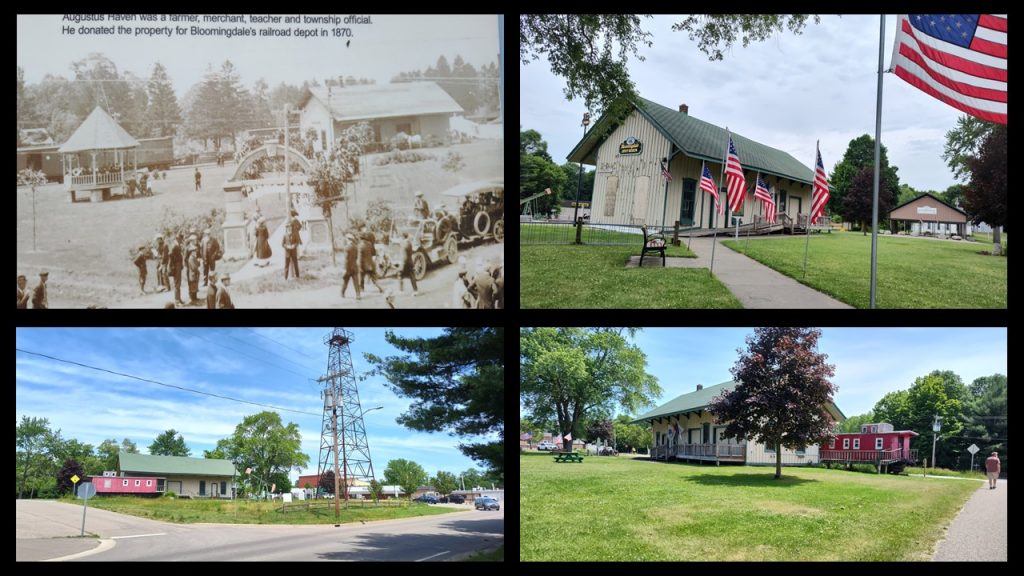
(Top Left photo dated 1870) Photo Credit: Kal-Haven Heritage Trail
Did you know that there had been an oil boom in Bloomingdale? Well in 1938 Elizabeth and George Homan’s house had been sprayed with oil as it had burst from the ground. “Pump Murray No. 1” had quickly been installed at the site. Soon, many more pumps had been added all around Bloomingdale.
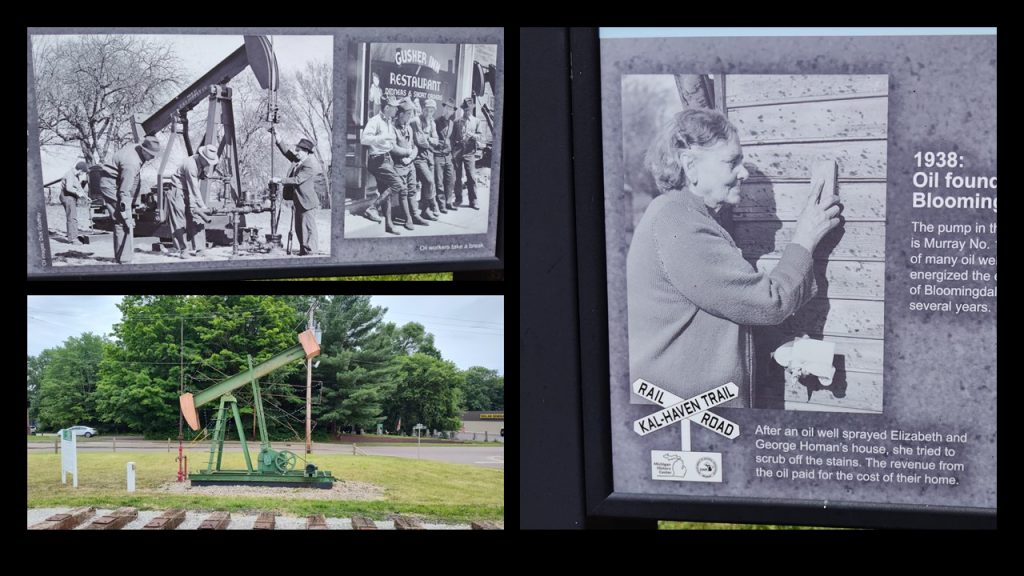
Photo Credit: Kal-Haven Heritage Trail
With the railroad, oil and lumber could easily be transported. In fact the sawmill owner, Harvey Howard and his brothers, Zeno and Joseph, had filled lumber orders for 3 million board feet of ash, whitewood and cherry.
Berlamont
Initially, Berlamont had been named, “Bear Lake Mills” with the post office opening in 1877. Vacationers had come to Bear Lake Mills for respite and relaxation.
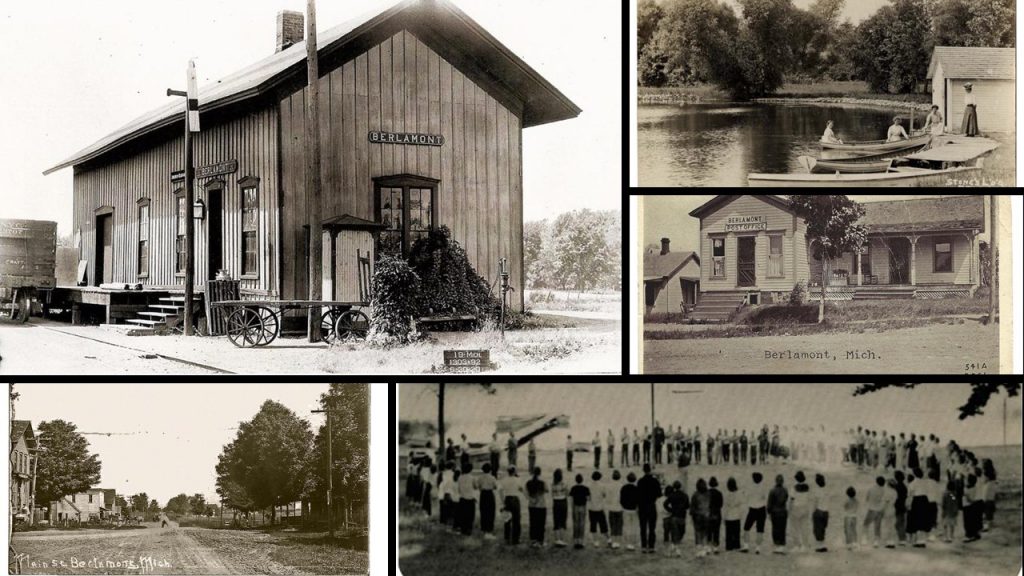
Photo Credit: Kal-Haven Heritage Trail
In 1948 Camp Kilbourne had been the training grounds for boxer, Joe Louis, with his trainer, Freddy Wilson.

(right) Joe Louis and trainer, Freddy Wilson, on their daily run at Camp Kilbourne.
Photo Credit: Kal-Haven Heritage Trail
Lacota
PICKLES! Do you like this tangy treat? Many towns had enormous pickle barrels standing along the tracks just like in the town of Lacota.
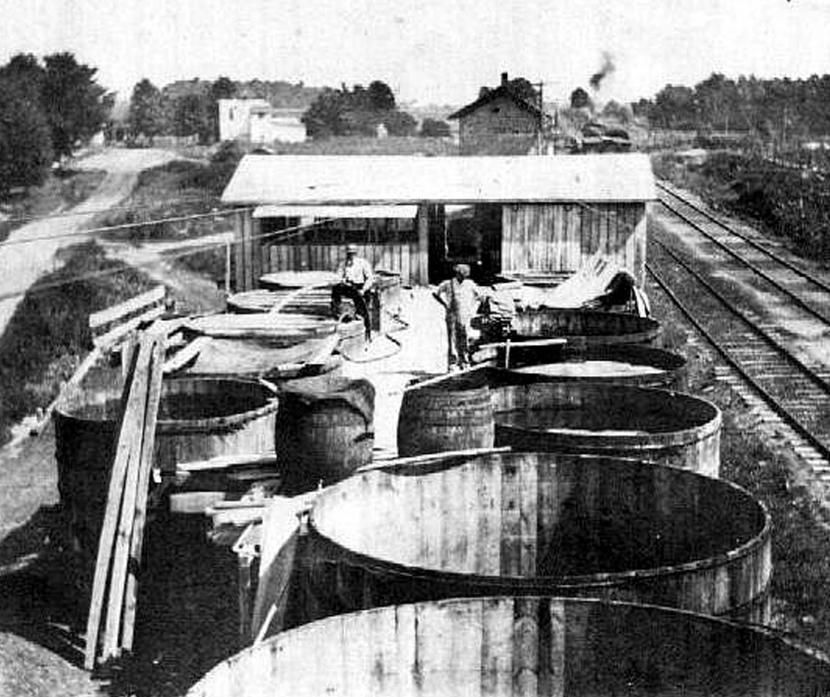
in the winter as he’d been soaked with pickle brine.
Photo Credit: Kal-Haven Heritage Trail
Lacota had a rough start, though. Two towns had been platted, Irvington on the north side of the tracks and an equally sized town on the south. Rivalries had ensued. Finally by 1892 the Michigan Central Railroad had formally requested that the two communities join into one. As the story goes the name, “Lacota,” had been chosen by Varnum D. Dilley after a character in a book.
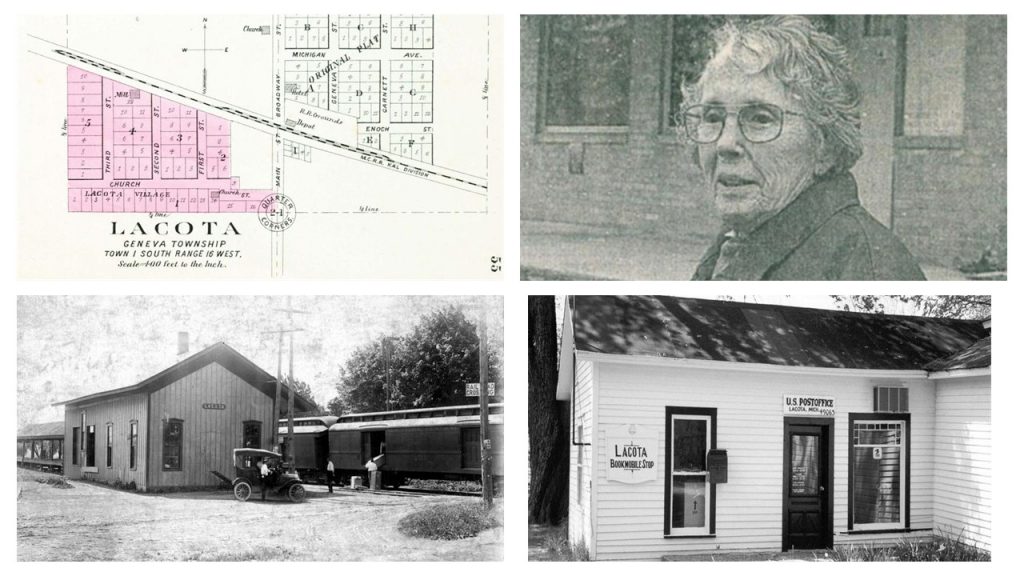
had described Lacota as a vibrant community.
Photo Credit: Kal-Haven Heritage Trail
Eileen Wood, postmaster, had described Lacota. “All of our entertainment was in Lacota – outdoor movies, box socials, community meetings…The men used to go to town every night and they’d sit and talk in front of the hardware store. It’s too bad Lacota kind of melted away.”
As the trains had stopped running in the early 1970’s, these towns and villages had ‘melted away,’ just as Eileen Wood had described.
Kibbie
John H. Tripp had relocated from New York in 1880. He had spearheaded the development of “Kibbie” and began the Kibbie Telephone Company.
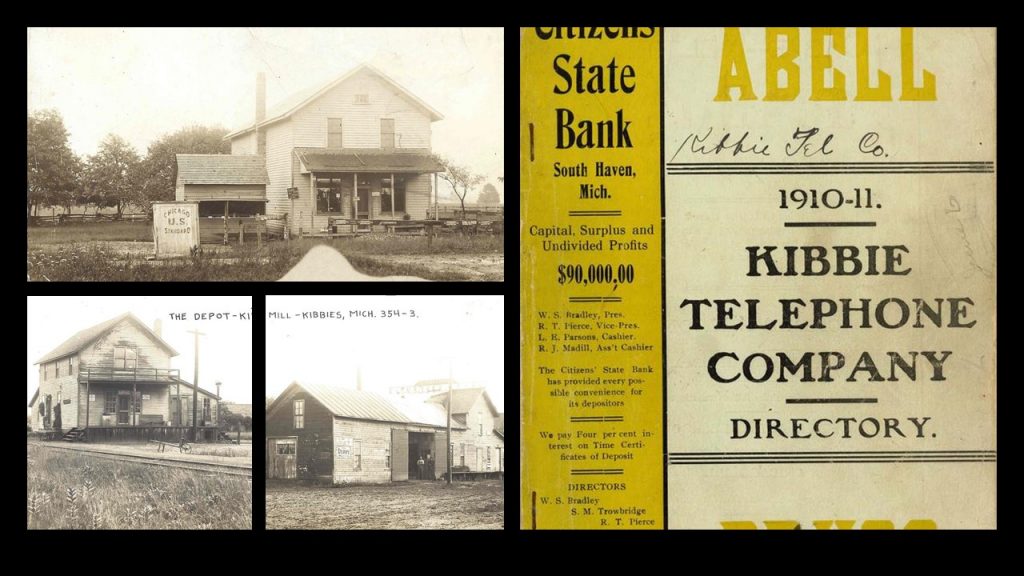
John H. Tripp had owned the general store, the mill (center)and ran the post office. (top)
Photo Credit: Kal-Haven Heritage Trail and MSU archives
When John’s youngest of four children had gotten ill in the mid 1890’s, John had been unable to contact a doctor by phone. He had to gather the sickly youngster in a wagon late at night and head to another nearby farm to call. This had spurred his idea for the Kibbie Phone Company.
John Tripp had worked to string 1,400 miles, yes miles, of wire throughout VanBuren and Allegan Counties. By 1896 the Kibbie Phone Company had been in operation.
The Outpost Campground – Near Kibbie
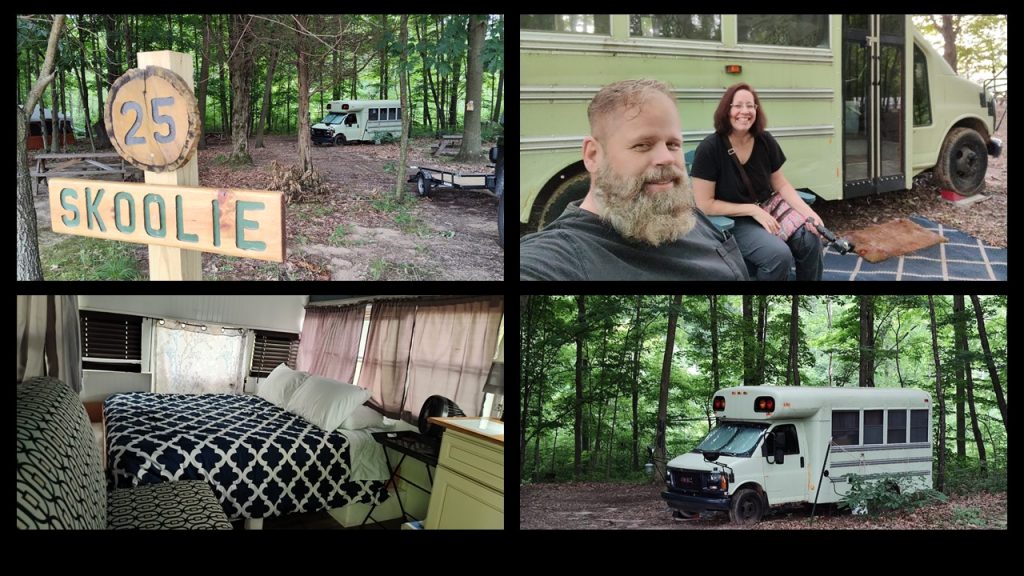
Did you do a double-take at the short bus sitting in the woods? I did! Chuck had rented the “Skoolie” for our overnight stay at The Outpost Campground. What a thrill for me! The bus has been remodeled into a cozy dreamscape. It’s one of the many offerings at the quaint campground near Kibbie.
The Kal-Haven Outpost Campground had been started in 2016 by two best friends and their spouses. In addition to the Skoolie, there are full hook up sites for RVs, cabins to rent and rustic sites, as well.
The Kal-Haven Continues
The history of past eras whispers all along this trail. I especially appreciate the years of dedicated work from the Kal-Haven Heritage crew and The Friends group who had made this trail a reality.
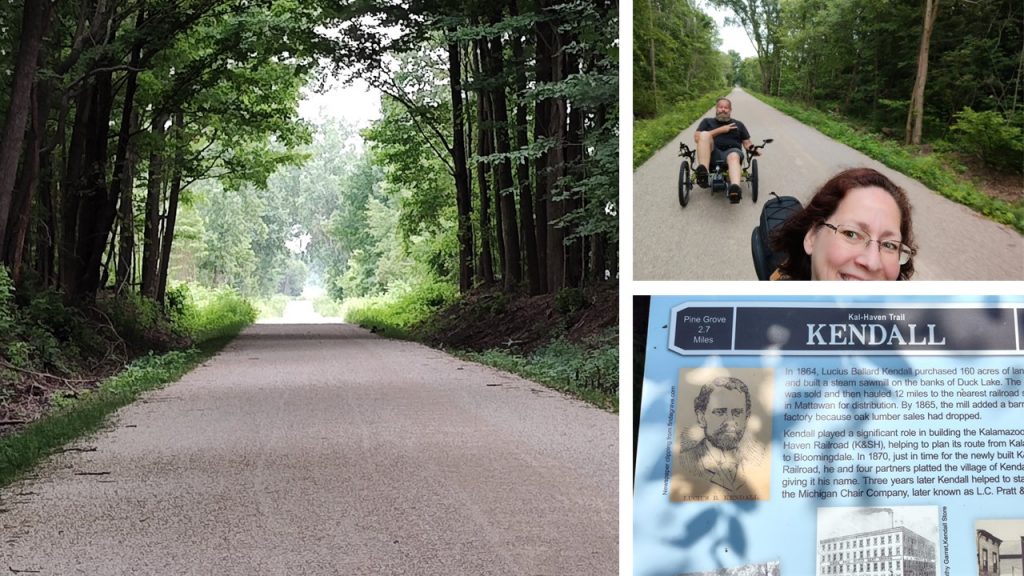
The Kal-Haven is the second oldest of 134 rail to trails in Michigan.
Dan Spegel, one of the group members, had spoken of the historic signs, “We wanted to add texture to these places.” Jeff Green, a chair on the board, had added, “Having these historical panels causes users to engage with the landscape and the communities along the way.”
South Haven
We had reached South Haven and enjoyed watching the ships and boats as they came through the channel. Did you know that Chuck sails on the 1810 replica of The Friends Good Will? The Michigan Maritime Museum offers voyages on this ship as well as other vessels. Continue to be curious and keep making memories!
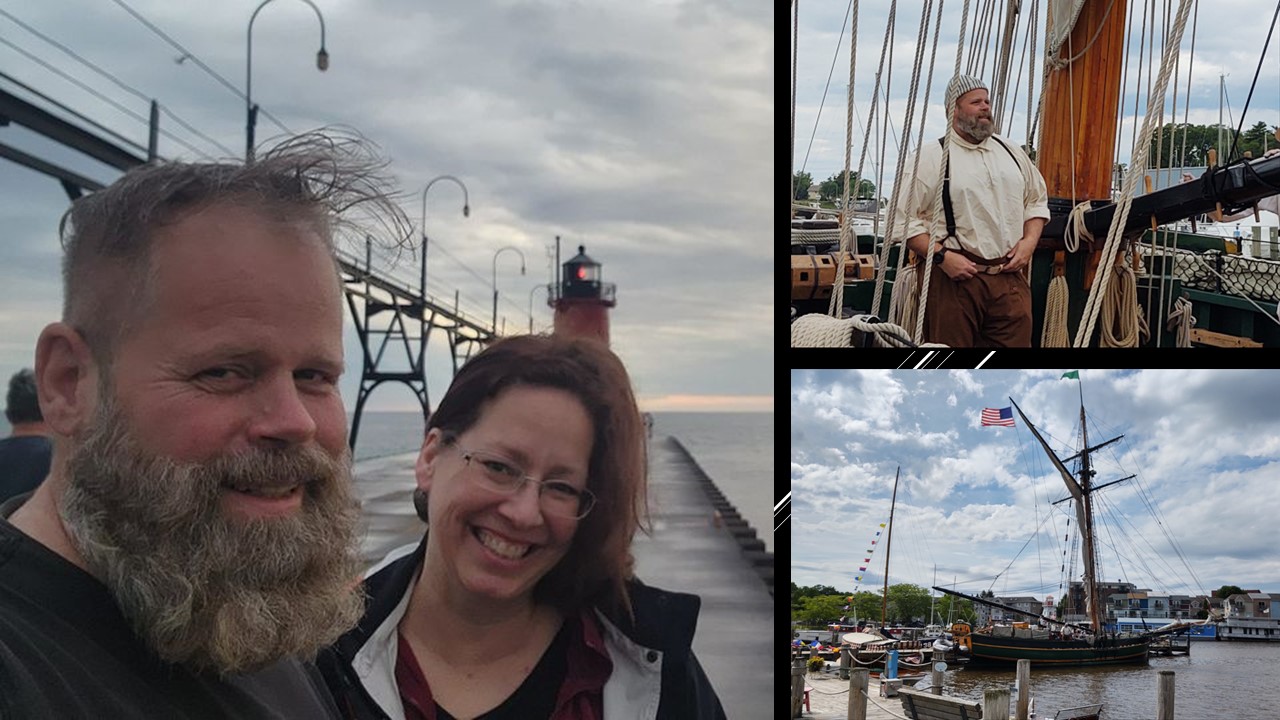
Related Links and Resources:
Michigan DNR map of the Kal-Haven Trail
Kal Haven Heritage Trail had spent years researching the history along the rails. Here’s their website.
Terra Trike had supplied us with a Rambler and an Evo model. Both have electronic assist.
The Kal-Haven Outpost Campground has cabins, the skoolie, full hook-ups for RVs as well as rustic sites.
Michigan State University’s article “Creating the Kal-Haven Trail”


